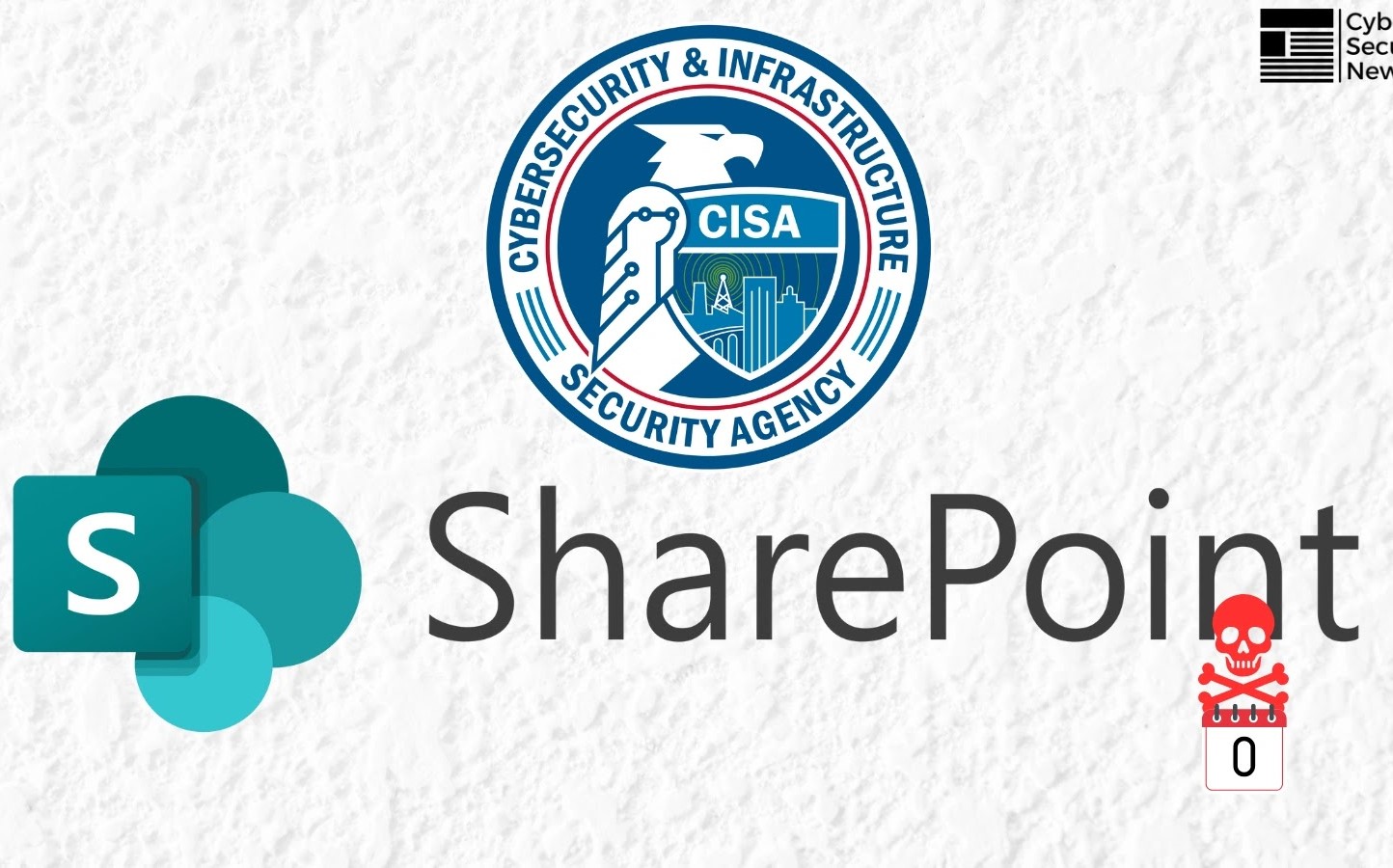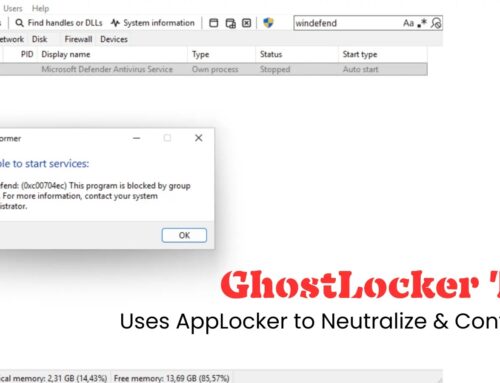
CISA Warns of Chinese Hackers Exploiting SharePoint 0-Day Flaws in Active Exploitation
In a perilous development for organizational security, the Cybersecurity and Infrastructure Security Agency (CISA) has issued an urgent and critical alert: sophisticated Chinese state-sponsored threat actors are actively exploiting previously unknown (0-day) vulnerabilities within Microsoft SharePoint. This high-impact campaign, dubbed “ToolShell,” targets on-premises SharePoint servers, posing a severe risk of unauthorized access and data compromise. For cybersecurity professionals, IT administrators, and developers responsible for maintaining secure digital infrastructures, understanding the mechanics of this attack and implementing immediate mitigations is paramount.
The Critical Threat: SharePoint 0-Day Exploits
CISA’s advisory highlights a multi-stage attack chain leveraging two distinct, critical vulnerabilities. These aren’t theoretical threats; they are being actively weaponized in the wild, enabling attackers to gain deep footholds within target networks. The specific vulnerabilities identified are:
- CVE-2025-49706: Network Spoofing Vulnerability – This flaw allows attackers to bypass network-level security controls and masquerade as legitimate network entities, setting the stage for deeper intrusions.
- CVE-2025-49704: Remote Code Execution (RCE) Vulnerability – This is the critical payload, enabling malicious actors to execute arbitrary code on the vulnerable SharePoint server without prior authentication. The combination of these vulnerabilities allows for a highly effective and unauthenticated attack path.
The “ToolShell” campaign demonstrates a high level of sophistication, indicative of well-resourced nation-state adversaries. The ability to achieve unauthenticated remote code execution on a critical enterprise application like SharePoint is a significant concern, opening doors to data exfiltration, lateral movement, and persistent access within compromised environments.
Understanding the “ToolShell” Campaign Mechanics
The “ToolShell” attack chain is designed to provide threat actors with comprehensive control over compromised SharePoint environments. By chaining CVE-2025-49706 and CVE-2025-49704, the attackers bypass typical authentication mechanisms and execute malicious code directly on the server. This capability allows them to:
- Achieve Unauthenticated Access: Gain initial access without needing legitimate credentials.
- Perform Remote Code Execution: Run arbitrary commands, install backdoors, and manipulate server configurations.
- Establish Persistence: Create mechanisms for continued access even after initial exploitation.
- Exfiltrate Sensitive Data: Compromise confidential information stored within SharePoint, including documents, user data, and intellectual property.
- Facilitate Lateral Movement: Use the compromised SharePoint server as a pivot point to access other systems within the network.
The exploitation of 0-day vulnerabilities means that traditional security measures that rely on known signatures or patches may not be effective, underscoring the urgent need for proactive defense strategies.
Remediation Actions and Proactive Defense
Given the active exploitation and the severity of these vulnerabilities, immediate action is critical for organizations utilizing on-premises Microsoft SharePoint servers. While specific patches for these 0-days (CVE-2025-49706 and ) are awaited from Microsoft, CISA’s alert necessitates a strong defensive posture. Organizations should:
- Isolate and Segment SharePoint Servers: Reduce the attack surface by ensuring SharePoint servers are on isolated network segments with strict ingress/egress filtering.
- Implement Least Privilege: Review and enforce the principle of least privilege for all user accounts and service accounts interacting with SharePoint.
- Monitor for Anomalous Activity: Significantly enhance logging and monitoring for all SharePoint-related activity. Look for unusual network connections, unknown processes, or access patterns from unexpected locations.
- Apply All Available Patches: While 0-day patches are pending, ensure all other security updates for SharePoint and the underlying operating system are applied promptly.
- Enhance Endpoint Detection and Response (EDR): Ensure EDR solutions are deployed on SharePoint servers and configured to detect post-exploitation activities and suspicious behaviors.
- Conduct Regular Vulnerability Scanning and Penetration Testing: Proactively identify potential weaknesses in your SharePoint deployment and surrounding infrastructure.
- Review and Harden SharePoint Configurations: Follow Microsoft’s security best practices for SharePoint hardening, disabling unnecessary features and services.
- Offline Backups: Maintain isolated, offline backups of SharePoint data to ensure rapid recovery in case of a compromise.
Recommended Tools for Detection and Mitigation
Leveraging appropriate cybersecurity tools can significantly aid in detecting potential exploitation and bolstering defenses against sophisticated threats like “ToolShell.”
| Tool Name | Purpose | Link |
|---|---|---|
| Network Intrusion Detection/Prevention Systems (NIDS/NIPS) | Monitor for suspicious network traffic patterns indicative of exploitation or C2 communication. | Varies by vendor (e.g., Snort, Suricata) |
| Endpoint Detection and Response (EDR) Solutions | Detect and respond to malicious activity on SharePoint servers, including process injection and file manipulation. | Varies by vendor (e.g., CrowdStrike, SentinelOne, Microsoft Defender for Endpoint) |
| Security Information and Event Management (SIEM) Systems | Aggregate and analyze logs from SharePoint and other systems for anomalous activity and potential breaches. | Varies by vendor (e.g., Splunk, Microsoft Sentinel, Elastic SIEM) |
| Vulnerability Scanners | Identify known vulnerabilities and misconfigurations in SharePoint and related infrastructure. | Varies by vendor (e.g., Nessus, Qualys, OpenVAS) |
| Microsoft SharePoint Health Analyzer | Built-in tool for identifying potential configuration issues and security weaknesses within SharePoint. | Microsoft Learn |
Conclusion and Ongoing Vigilance
The CISA alert regarding the “ToolShell” campaign exploiting SharePoint 0-days serves as a stark reminder of the persistent and evolving threat landscape. The active exploitation by suspected Chinese state-sponsored actors underscores the critical importance of a proactive and layered defense strategy. Organizations must prioritize immediate remediation actions, enhance their monitoring capabilities, and maintain constant vigilance. As new information and patches become available, rapid deployment will be crucial to securing on-premises SharePoint deployments against these advanced persistent threats. Effective cybersecurity is not a one-time setup; it is an ongoing, adaptive process essential for protecting critical assets.





